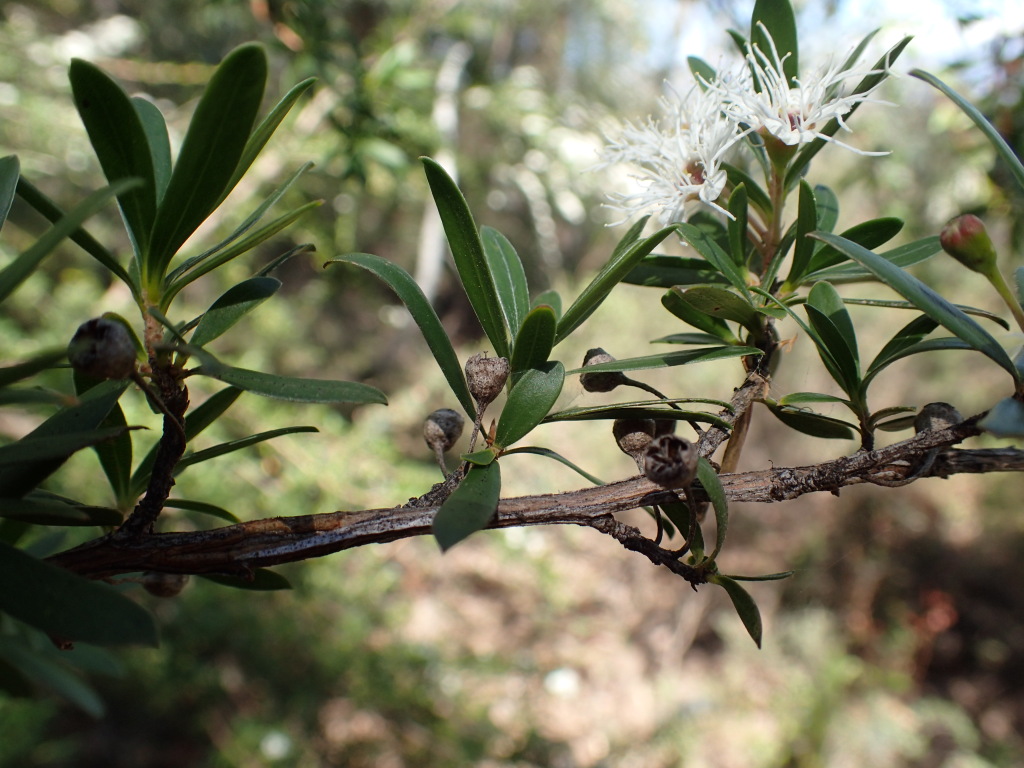Kunzea peduncularis
F.Muell. Mountain BurganDense, erect shrub, usually 1–2 m high, sometimes single-stemmed and over 4 m high; bark on young stems shedding on oblong flakes, older stems usually peeling in papery strips, young stems minutely pubescent. Leaves alternate, obovate to oblanceolate, spreading, 5–13 mm long, 2–3.5 mm wide, bright green to grey-green, minutely pubescent to glabrescent, hairs often restricted to leaf margins, more or less flat; apex obtuse to acuminate; margins entire; petiole 0.5–1 mm long. Flowers white, crowded in upper leaf axils or on leafy side branches; pedicels 3–5 mm long, pubescent, sometimes glabrescent; floral bracts absent; hypanthium pubescent, sometimes glabrescent, rugulose, 2.5–3.5 mm long; sepals green, reddish at base, triangular, 1–1.5 mm long; petals orbicular, c. 1.5–2.5 mm diam.; stamens white, usually 50–64, 1–4 mm long, rarely with a few stamens shorter than petals; style 1.5–2.5 mm long; ovary usually 3-celled, sometimes 4- or 5-celled. Fruit c. 3.5 mm long, c. 4 mm diam., not woody, dehiscent by terminal valves. Flowers Nov.–Jan.
VRiv, GipP, CVU, NIS, EGL, EGU, HSF, HNF, MonT, HFE, VAlp. Also NSW, ACT, Tas. Occurs in rocky sites, often near seepage areas or in wet gullies in montane and subalpine woodland in eastern Victoria, generally above c. 900 m altitude but sometimes extending down to 100 m altitude.
Kunzea peduncularis is thought to hybridise with K. phylicoides along the Snowy River. Hybrids with K. parvifolia occur in the Burrowa-Black Mountain area in the far north east.
 Spinning
Spinning